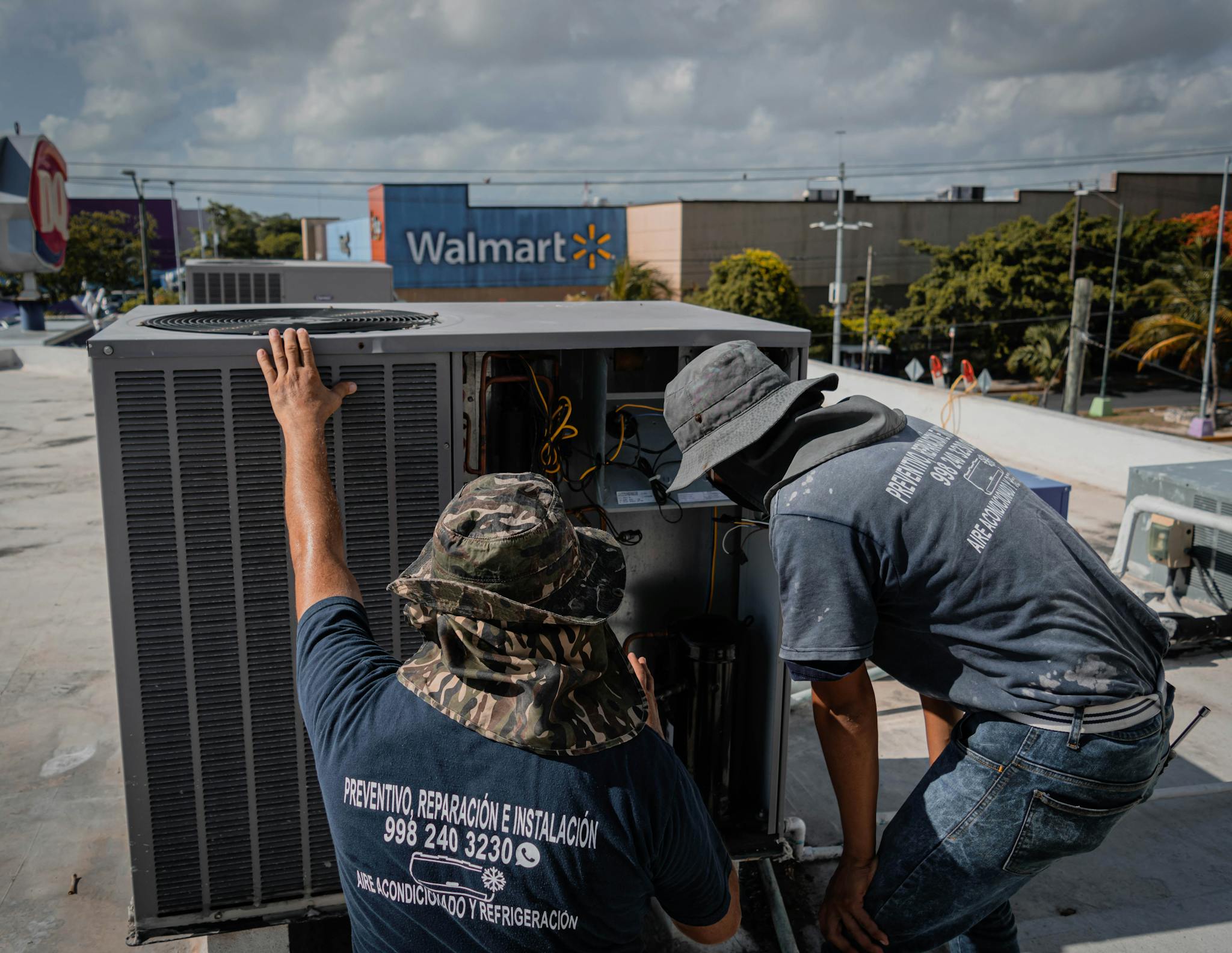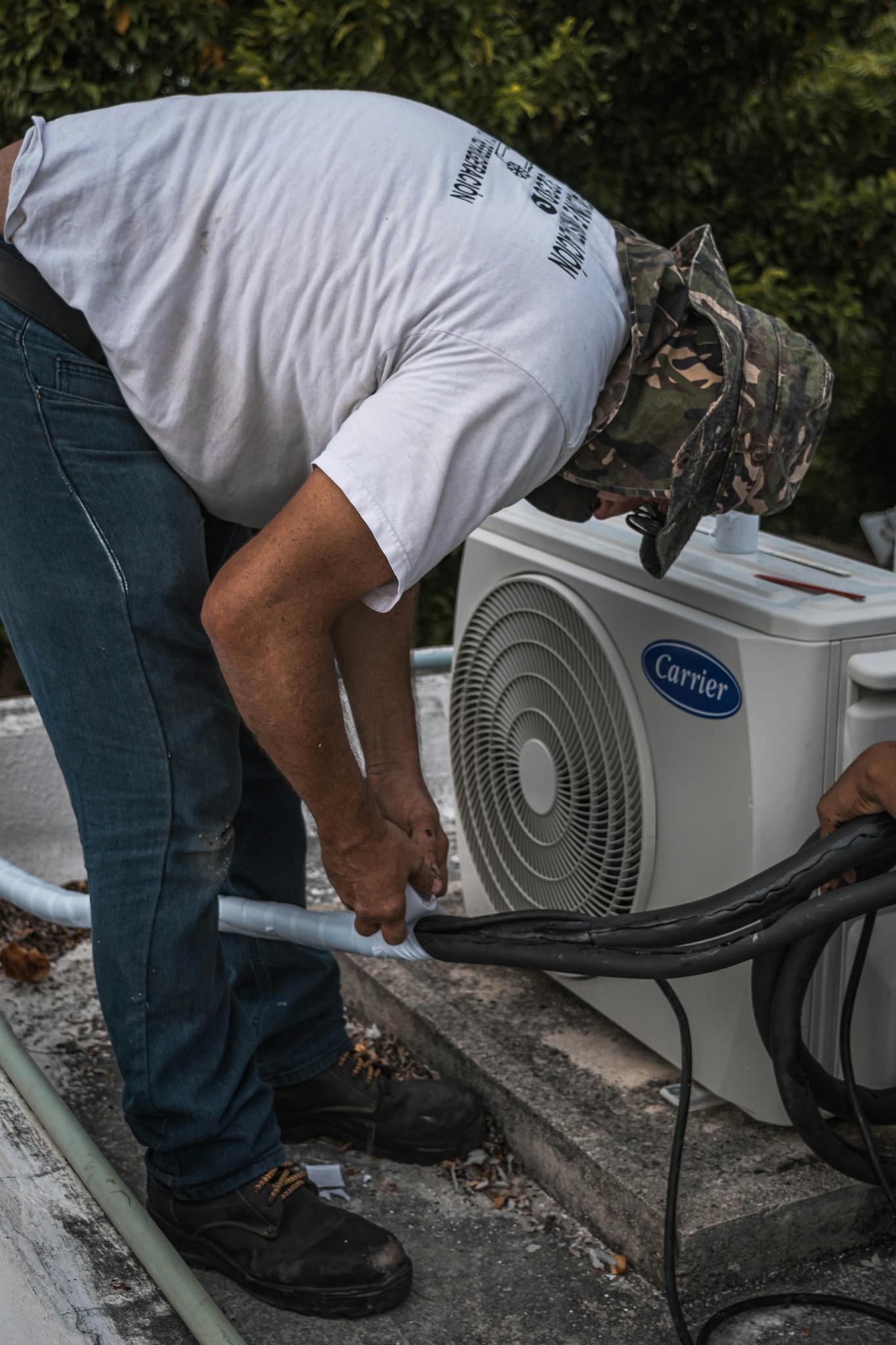Residential
Adapting Strategies for HVAC and Plumbing Success
Master adaptive strategies for HVAC and plumbing success, focusing on diversified services and digital advancements to navigate industry complexities and…

Adapting strategies for HVAC and plumbing success entails addressing market growth challenges by emphasizing diversified service offerings and leveraging digital advancements. Expanding service portfolios reduces seasonal revenue gaps and boosts customer loyalty. Strategic investments and market consolidation can enhance operational efficiencies, while real-time business management guarantees pricing and margins align with economic conditions. Embracing smart systems and renewable energy integration fosters sustainability and innovation. Strong customer relationships, built on trust and transparent pricing, are essential to maintaining a competitive edge. Entrepreneurs focusing on these adaptive strategies will navigate the complexities of this evolving industry effectively, uncovering further nuances in ongoing developments.
Key Takeaways
- Diversify service offerings to reduce seasonal risk and increase customer loyalty.
- Invest in digital tools for real-time pricing and margin management to bolster profitability.
- Strengthen customer relationships through personalized services and transparent pricing.
- Focus on strategic acquisitions to expand service capabilities and market presence.
- Embrace innovations like smart systems and renewable energy integration for sustainability.
Market Growth and Challenges
The HVAC market, a cornerstone of modern building infrastructure, is projected to grow at a compound annual growth rate (CAGR) of 3.9%, reaching an estimated $370 billion by 2030.
However, this growth is accompanied by significant challenges. Rising costs, an uncertain economy, and workforce shortages are pressing concerns for industry operators.
Furthermore, the increasing competition necessitates strategic adaptation. Focusing on growth strategies and relationship management is vital for maneuvering these complexities.
Operators must emphasize resilience to succeed in this evolving market. Adaptation to market dynamics and the ability to manage relationships effectively are essential in maintaining a competitive edge.
Addressing these challenges head-on will be pivotal for sustained growth and operational success.
Diversification of Services
Expanding service portfolios has become a critical strategy for HVAC and plumbing businesses aiming for long-term sustainability.
By offering a combination of services, companies can mitigate the risks associated with seasonal fluctuations and enhance customer retention. A diversified portfolio not only stabilizes revenue streams but also increases competitive advantage.
Key benefits of diversification include:
- Mitigation of seasonal business fluctuations
- Enhanced customer loyalty through extensive service offerings
- Increased market appeal as a one-stop service provider
- Reduction in customer turnover to competitors
- Improved operational efficiency through cross-trained staff
Investment and Scale
As the home services market in the U.S. remains highly fragmented with over 100,000 businesses, significant investment capital is creating substantial consolidation opportunities.
Scaled platforms, which service approximately 20% of metro areas, benefit from enhanced purchasing power, marketing capabilities, and specialized training functions. These advantages enable businesses to operate more efficiently and competitively.
Tuck-in acquisitions—small companies absorbed by larger ones—further enhance service differentiation and skill breadth, offering a more extensive range of services to customers.
For entrepreneurs, this means greater freedom to focus on strategic growth and innovation.
Real-Time Business Management
Daily management of pricing and gross margin stands at the forefront of guaranteeing profitability in HVAC and plumbing sectors. Constant vigilance on these metrics empowers operators to navigate economic fluctuations effectively.
By maintaining a real-time approach, businesses can swiftly respond to market changes and cost variances.
Key strategies include:
- Monitoring daily job costs to guarantee alignment with budgeted projections.
- Utilizing software solutions for automated pricing updates and margin tracking.
- Conducting regular financial reviews to identify trends and gaps.
- Training staff on the importance of cost controls and efficient practices.
- Engaging in proactive supplier negotiations to secure favorable terms.
Implementing these strategies promotes operational health and sustains business growth, empowering operators to thrive in a competitive landscape.
Future Trends and Innovations
Emerging trends and innovations in the HVAC industry are poised to reshape the landscape, driving the sector towards a more sustainable and technologically advanced future.
Digitalization is catalyzing advancements, with smart systems enabling real-time monitoring and energy optimization. The integration of renewable energy sources, such as solar and geothermal, is becoming increasingly prevalent, reducing reliance on traditional power grids.
Innovations in HVAC technology, like advanced heat pumps and energy-efficient chillers, are critical in the pursuit of net-zero emissions by 2050. Additionally, the industry is exploring new materials and designs for improved indoor air quality and comfort.
Attracting new talent remains essential, with educational initiatives highlighting the sector’s evolving and impactful nature.
Building Customer Relationships
Strong customer relationships serve as the cornerstone of a successful HVAC and plumbing business. Establishing trust and demonstrating reliability guarantees repeat business and referrals.
Effective communication and high-quality service solidify these relationships, creating a foundation for long-term success. Key strategies include:
- Personalized Service: Tailoring solutions to individual customer needs.
- Consistent Follow-ups: Regular check-ins to address concerns and guarantee satisfaction.
- Transparent Pricing: Clear and upfront cost estimates to build trust.
- Customer Education: Informing clients about maintenance tips and system upgrades.
- Responsive Support: Providing prompt assistance for emergencies and inquiries.
Conclusion
Coincidentally, as the HVAC and plumbing industries confront rising costs, economic uncertainties, and workforce shortages, the necessity for adaptive strategies becomes paramount. Diversification into electrical, plumbing, and sewer services guarantees business sustainability and customer retention. Real-time business management, dynamic pricing, and cost adjustments are critical for profitability. Future trends highlight the integration of digitalization, renewable energy, and net-zero emissions targets. Effective relationship management and strategic investments will drive success in this increasingly competitive market.

-

 Breaking News1 year ago
Breaking News1 year agoCentury Unveils New Distribution Hub in Houston
-
Business1 year ago
The only Google Business Profile Features That directly Make Your Listing Rank Higher
-

 Blogging1 year ago
Blogging1 year agoEffective Blog Promotion: Strategies to Increase Your Reach
-

 Blogging1 year ago
Blogging1 year agoThe Essentials of Blogging: Tips and Strategies for Success
-

 Training and Education11 months ago
Training and Education11 months agoNavigating New HVAC Regulations: Compliance and Education
-

 Blogging1 year ago
Blogging1 year agoNever Run Out of Ideas: Top Tips for Generating Fresh Blog Topics
-

 Blogging1 year ago
Blogging1 year agoBuilding a Loyal Blog Audience: Strategies for Engagement and Growth
-

 Blogging1 year ago
Blogging1 year agoMaximizing Your Blog’s Reach: SEO Tips for Bloggers

